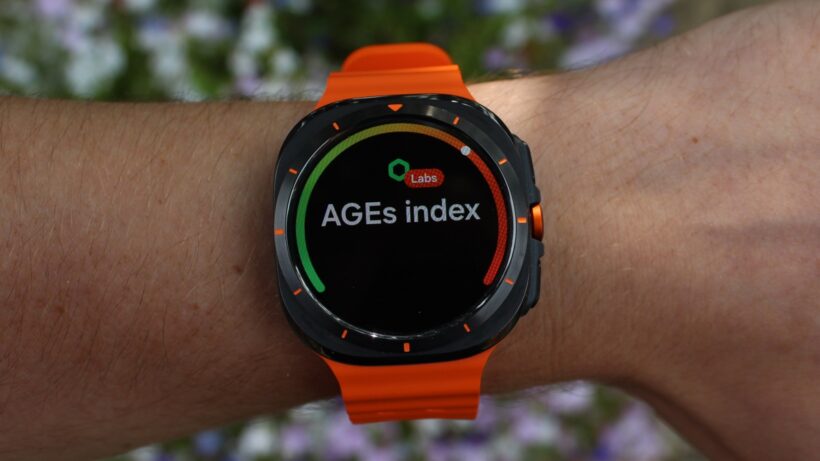Everything you need to know about Samsung's health feature.
Samsung’s redesigned BioActive sensor delivered highly accurate results when we tested the 2024 crop of Galaxy Watch products, but it also unlocks an exclusive health insight: the AGEs index.
Providing you have a Galaxy Watch 7 or Galaxy Watch Ultra, you’ll have access to the new metric, one designed to give you an insight into your metabolic health.
The problem, then? The AGEs index has proven very challenging for users (including us) to grasp.
When we initially tested the feature, most people also reported near-identical levels on Samsung’s scale. We discussed this in detail in our Galaxy Watch Ultra review, but numerous threads on Reddit and elsewhere report the identical scores and issues.
Below, we’ll attempt to demystify the health feature and help you get more out of it.
What are AGEs?

AGEs are ‘advanced glycation end products’. In simple terms, these are compounds that form when protein or fat combines with sugar in the bloodstream.
If your food has been grilled, fried, toasted, or exposed to any other form of high temperature, the end products can also form before you’ve even consumed it.
Our bodies have methods to help negate these harmful compounds – such as enzymes – but this activity only goes so far in eliminating AGEs.
Diet, as a result, is considered one of the biggest factors when looking to affect the glycation and the formation of AGEs.
What do studies say about AGEs?
Over the past few decades, AGEs have become an increasingly important area of research interest, primarily due to evidence showing that elevated levels of the compounds correlate with adverse health outcomes.
Studies are incredibly complex to dissect, as evidenced in this 2022 paper from Twarda-Clapa et al.. However, research indicates a consensus that AGEs can be managed through changes in food processing (such as steaming vs. grilling) and by avoiding a high-sugar diet.
As explained in a 2017 study by Prasad et al, those negative health outcomes are also relatively well-established: “Elevated AGEs are associated with higher risk of all-cause mortality, severity of coronary atherosclerosis, and cardiovascular disease mortality as well as chronic kidney disease.”
How does Samsung measure AGEs?

The redesigned BioActive sensor, which we mentioned above, now features a wider range of LED types, and Samsung claims it has also improved its performance and arrangement.
These design factors appear to directly enable snapshots of AGEs, with Samsung crediting the increased array of green and red LEDs (and the increased diversity, which now includes yellow, violet, and ultraviolet ones) for unlocking the biomarker.
This method likely employs the same skin autofluorescence technique described in Cavero-Redondo et al’s 2018 meta-analysis of AGEs measurement. However, it’s unknown just how accurate Samsung’s interpretation of this is.
Samsung has also suggested that the AGEs index is the first of many preventative health features to be unlocked by this new sensor setup.
How does the Samsung AGEs index work?

Wearing your compatible Galaxy Watch overnight will result in a snapshot assessment of your AGEs, which will then be viewable in the Samsung Health app or on the smartwatch.
This isn’t a score, as you might find with your sleep stats or Samsung’s new Energy Score. Instead, your AGEs are graded from low to high.
As explained earlier, a lower amount of AGEs is preferable; however, this isn’t explicitly mentioned in the Health app, leaving you to figure it out yourself.
Given that the value of your AGEs snapshot exists on a sliding scale, it’s also difficult to tell precisely where it sits. However, the app’s graph (as shown above) does show slight changes.
As research shows, this slight movement is normal, and AGEs aren’t something that will fluctuate dramatically each day.
However, as we alluded to earlier, many users are reporting very similar scores, around 7-8/10 on the sliding scale, which is also where ours roughly remained for the last few weeks.
This isn’t necessarily wrong information or inaccurate tracking. Still, the lack of upfront explanations from Samsung about the feature, information related to typical or expected ranges, or even coaching on improving your AGEs, means it’s not a feature that’s easy to get used to.
We should also note, however, that this is a feature that’s still designated as ‘Labs’, so it’s likely that improvements such as this are in the pipeline.




